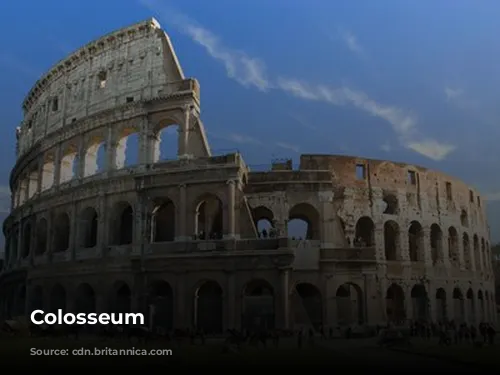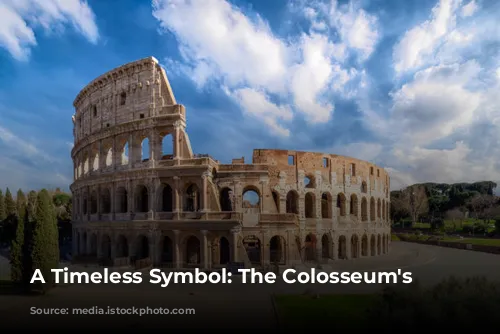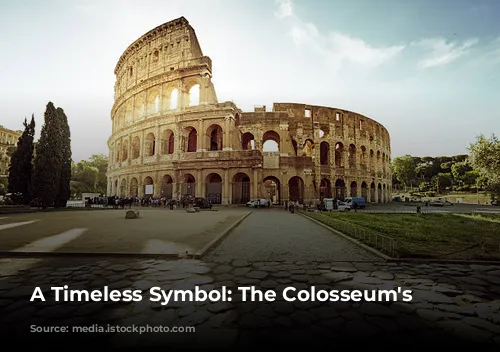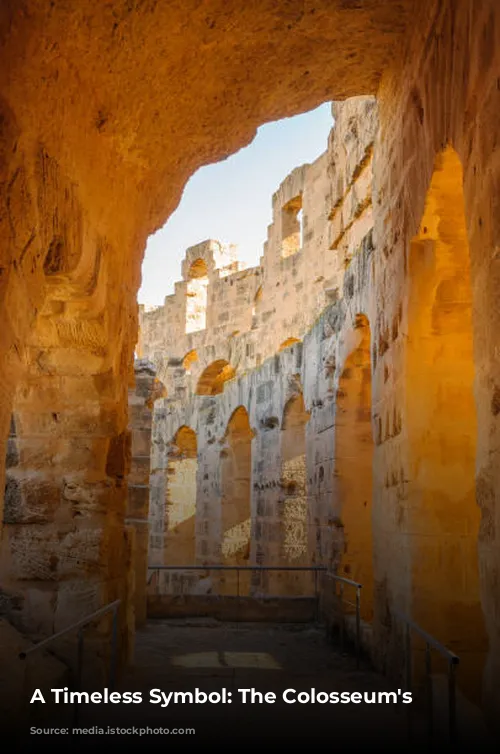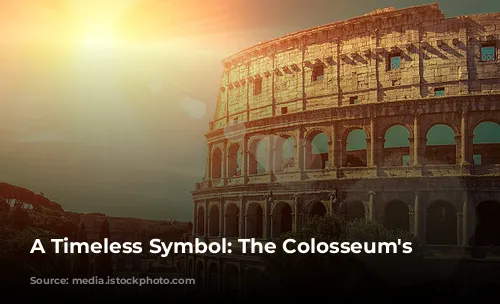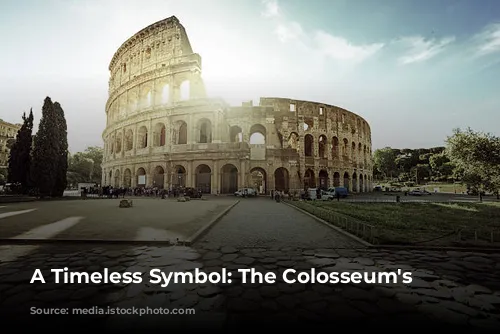The Colosseum, standing tall in the heart of Rome, is not just a monument to ancient Rome’s architectural and engineering marvels but also a major driver of tourism for modern-day Italy. Imagine this: in 2018 alone, the Colosseum, along with the Roman Forum and Palatine Hill, raked in over $63.3 million (€53.8 million) – the highest revenue generated by any tourist attraction in the entire country! This iconic structure, a testament to the Romans’ ingenuity and skill, continues to draw crowds from around the world, making it a beacon of history and a source of pride for Italy.
From Glory to Decline and Back
The Colosseum’s story is one of both triumph and adversity. After the fall of the Western Roman Empire, this once grand arena fell into a state of disrepair. The once bustling heart of entertainment became a silent witness to time’s passage.
The 12th century saw the Colosseum transformed into a fortress by the powerful Frangipane and Annibaldi families. But even they couldn’t hold back the relentless march of time.
The late 15th century saw Pope Alexander VI grant permission for the Colosseum to be used as a quarry, stripping it of its splendid materials. This act of destruction was a sad testament to the neglect this iconic structure suffered over a thousand years.
Fortunately, the 1990s marked a turning point. State-funded restoration efforts breathed life back into the Colosseum, embarking on a journey to reclaim its lost glory.
A Monument to Empire and Entertainment
The Colosseum’s roots lie deep within the heart of the Roman Empire. Built during the reign of the Flavian emperors, it was a symbol of imperial power and a celebration of Roman culture.
The Colosseum’s construction, a testament to Vespasian’s vision to revitalize Rome, was a grand undertaking. It began between 70 and 72 CE, a time of political turmoil and rebuilding.
Like other amphitheaters, the Colosseum was meant to entertain the masses. Gladiator fights, animal hunts, and even mock naval battles were just some of the spectacles that unfolded within its walls.
The Colosseum’s dedication in 80 CE by Titus, Vespasian’s son and successor, marked a grand celebration. The structure’s fourth story, added by the emperor Domitian in 82 CE, completed the architectural masterpiece.
Importantly, the arena was financed with plunder from Titus’s conquest of Jerusalem in 70 CE, and built by enslaved Jews from Judea. This reminder of the Roman Empire’s conquests and its reliance on slave labor adds a complex layer to the Colosseum’s story.

A Masterpiece of Engineering and Architecture
The Colosseum is an awe-inspiring feat of engineering and architecture. Built with stone, concrete, and tuff, it stands tall, a testament to the Romans’ ability to transform the impossible into reality.
This elliptical structure, measuring 620 by 513 feet (189 by 156 meters), could accommodate as many as 50,000 spectators, making it one of the largest arenas ever built.
The Colosseum’s construction was a marvel of its time, showcasing innovative techniques and architectural prowess. Its three stories, encircled by arcades framed by Doric, Ionic, and Corinthian columns, have inspired countless architects and artists throughout history.
The Colosseum’s structure, a complex blend of barrel vaults and groin vaults, was a testament to Roman ingenuity. It showcased the Romans’ understanding of weight distribution and structural integrity, making it one of the most enduring architectural marvels in the world.
A Place of Spectacles and Shadows
The Colosseum was more than just an arena; it was a stage for the most spectacular and brutal events of the Roman Empire.
Thousands of spectators flocked to the Colosseum, their eyes fixed on the gladiatorial combats, men-versus-animal battles, and even mock naval engagements. The Colosseum’s atmosphere must have been electrifying as the crowds cheered, gasped, and were awed by the spectacle unfolding before them.
The Colosseum’s retractable velarium (awning), supported by masts extending from the top story, provided shade from the Roman sun. This intricate system, requiring the expertise of hundreds of Roman sailors, allowed for uninterrupted entertainment throughout the day.
However, the Colosseum also holds darker secrets. The arena may have been the site of early Christian martyrs, though this remains uncertain. Despite the brutal nature of many of the spectacles, the Colosseum continues to fascinate and captivate people from all walks of life.
From Ruin to Resurgence
The Colosseum’s story is one of cyclical change, mirroring the rise and fall of the Roman Empire itself.
After the Empire’s decline, the Colosseum fell into disrepair, its once grand structures reduced to rubble. Marble seats and decorative materials were stripped away, transforming the arena into a quarry for building materials.
Yet, the Colosseum’s story is one of resilience.
Preservation efforts began in earnest during the 19th century, with Pope Pius VIII leading the way. These early initiatives laid the groundwork for the major restoration project undertaken in the 1990s, which breathed new life into the iconic structure.
Today, the Colosseum stands as one of Rome’s top tourist attractions, drawing millions of visitors each year. It’s a living reminder of the Roman Empire’s legacy and a testament to the enduring power of art and architecture.
The Colosseum continues to inspire awe and wonder with its imposing presence and rich history. It remains a symbol of Rome’s greatness, a place where the echoes of the past resonate with the present, and a beacon of hope for the future.

